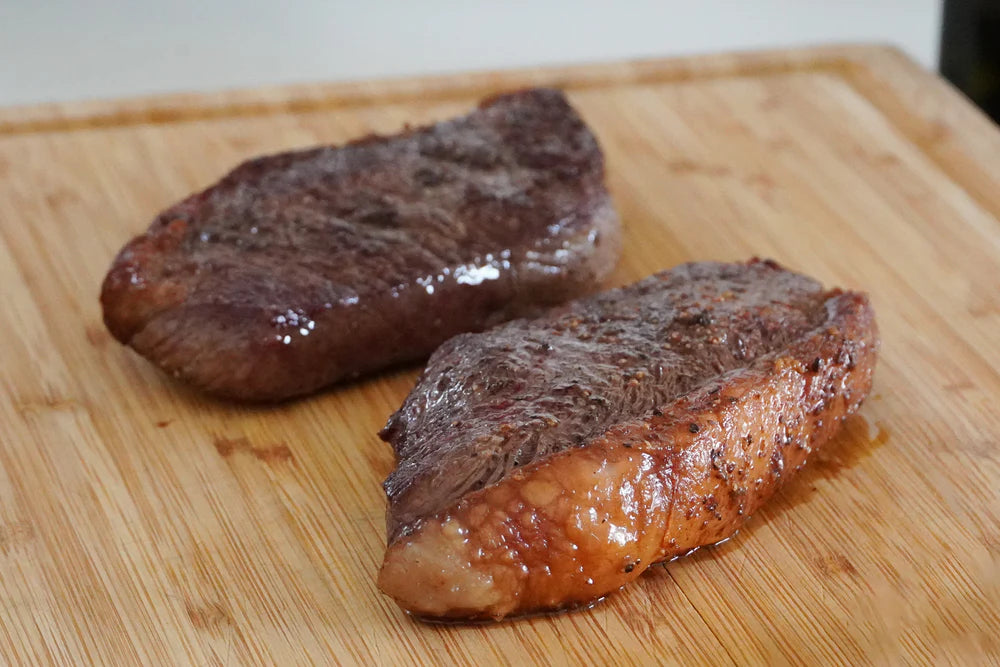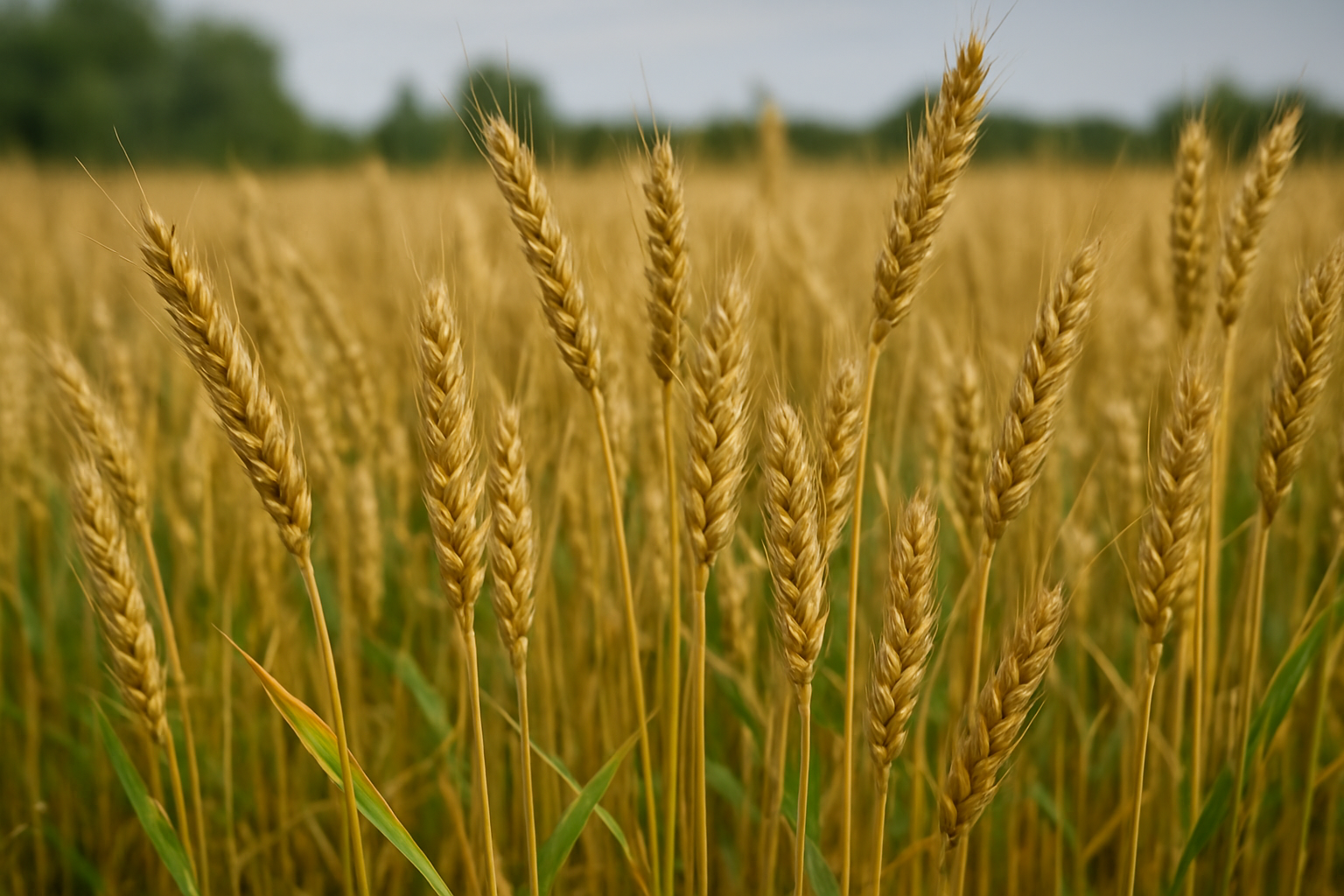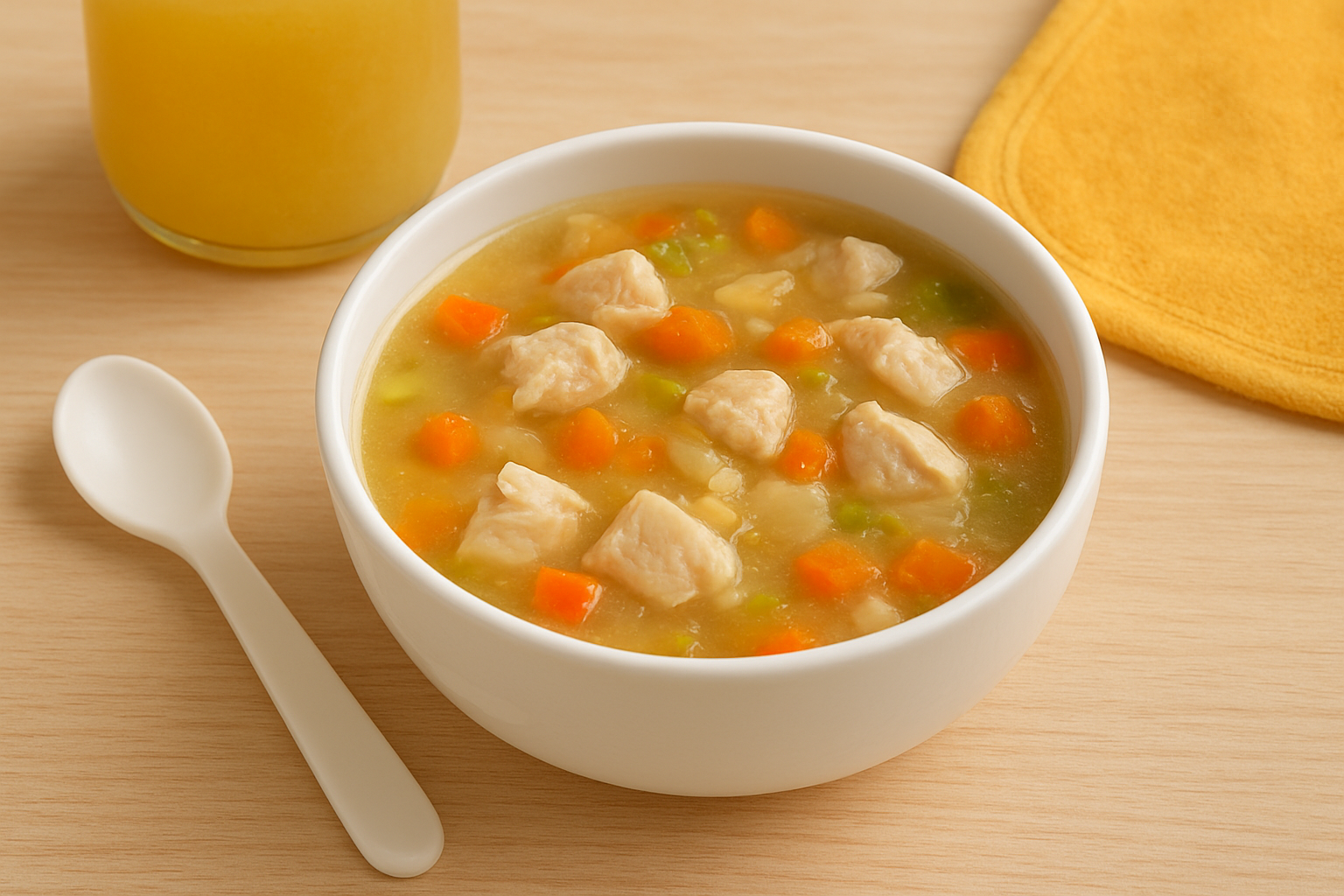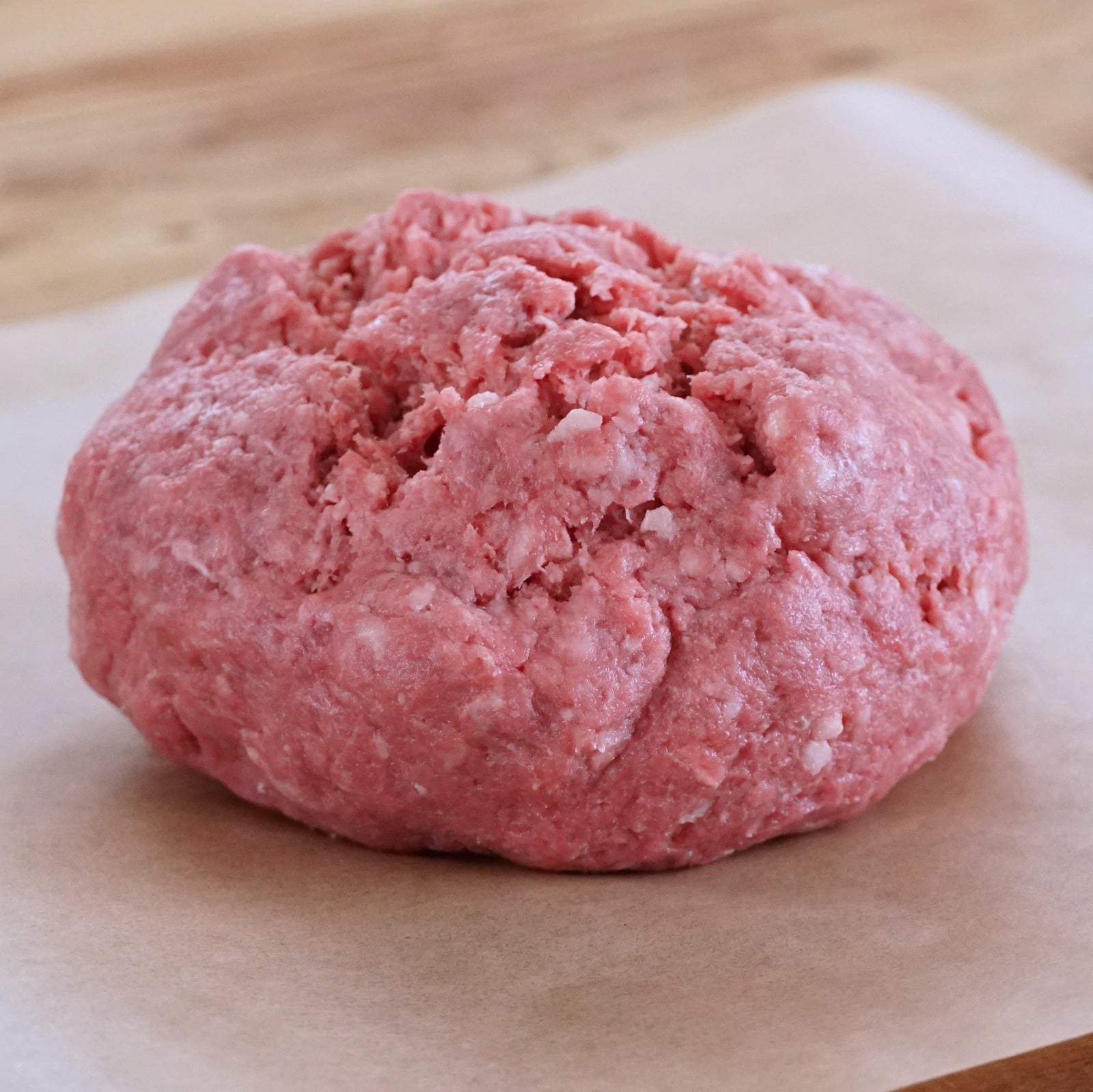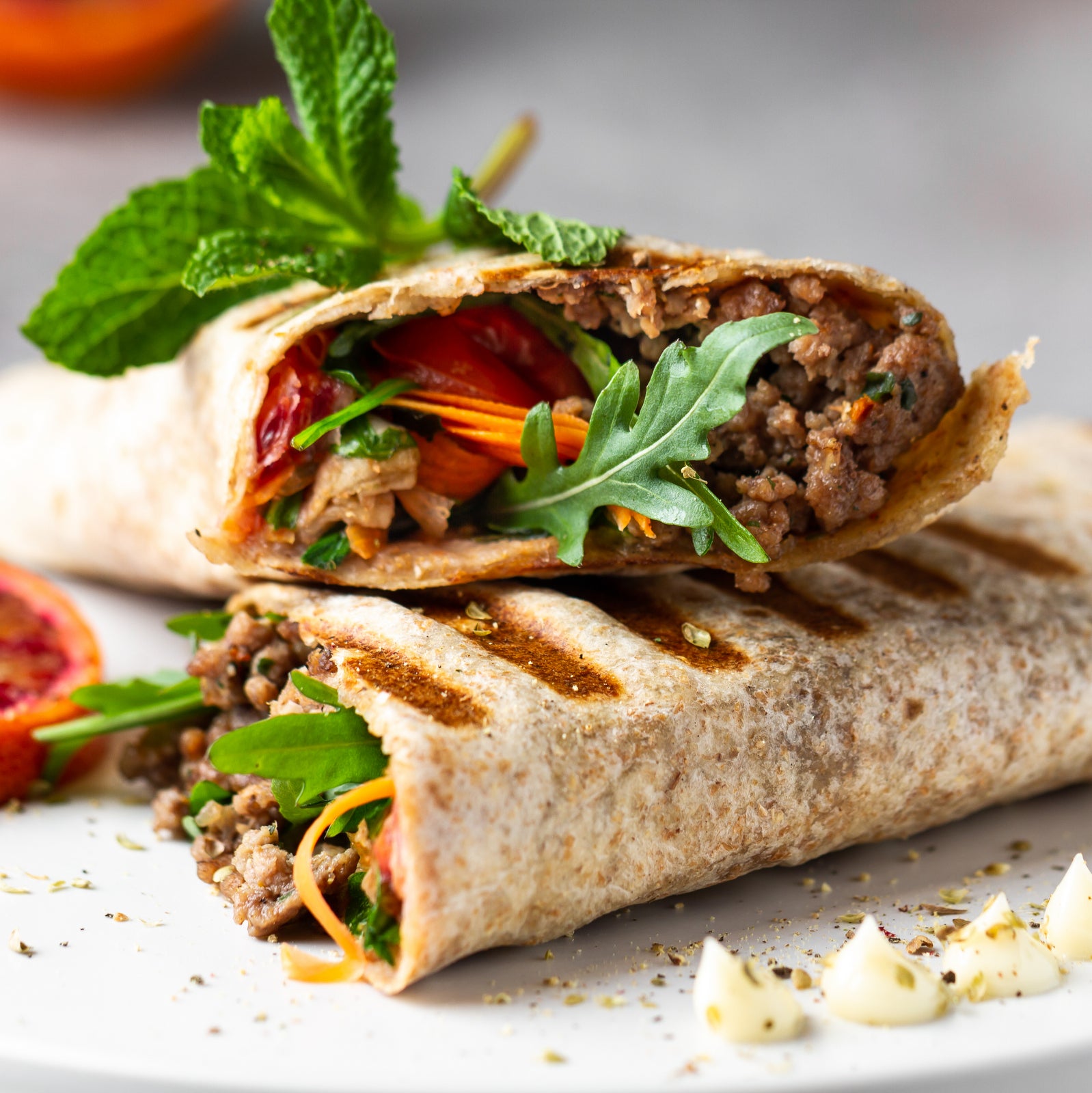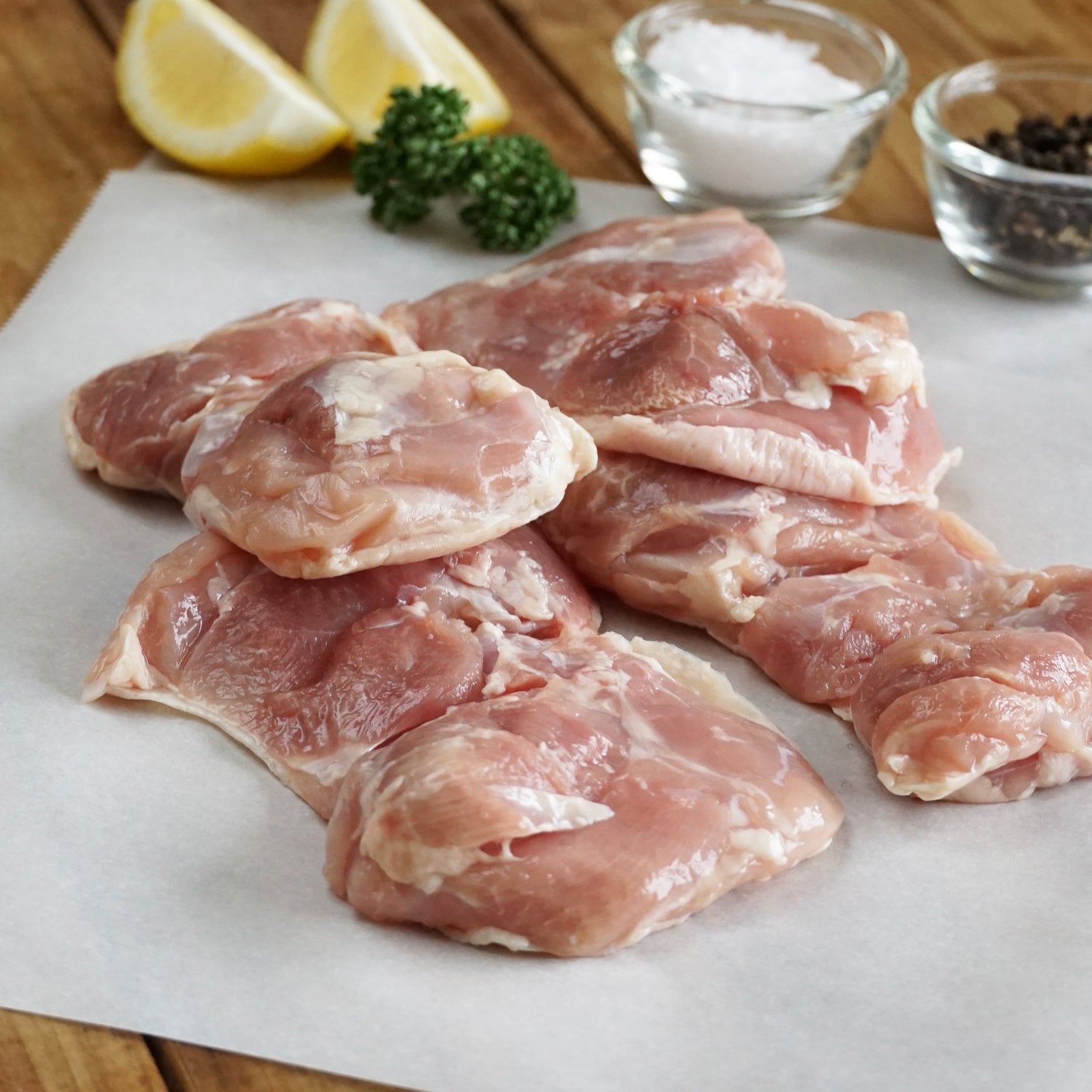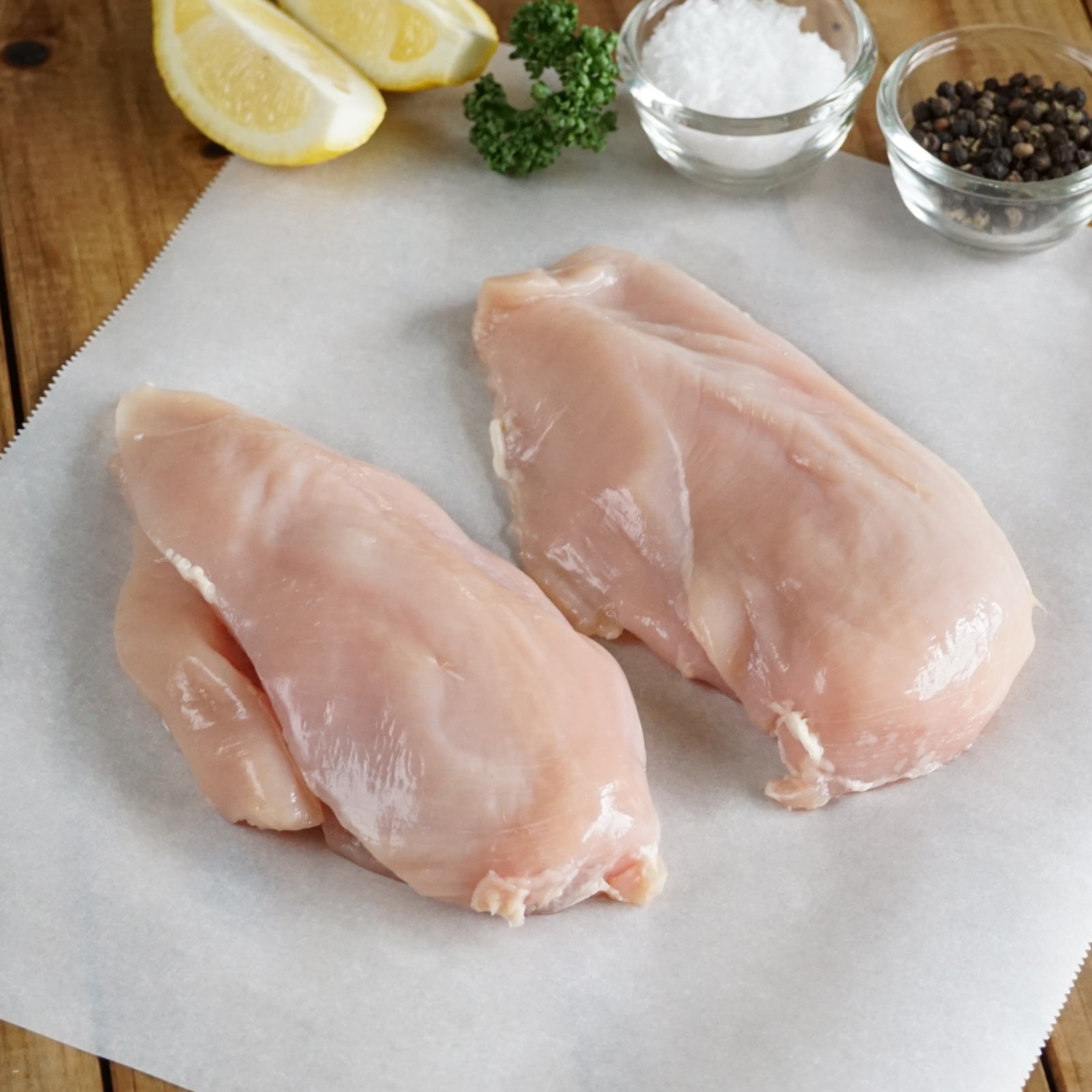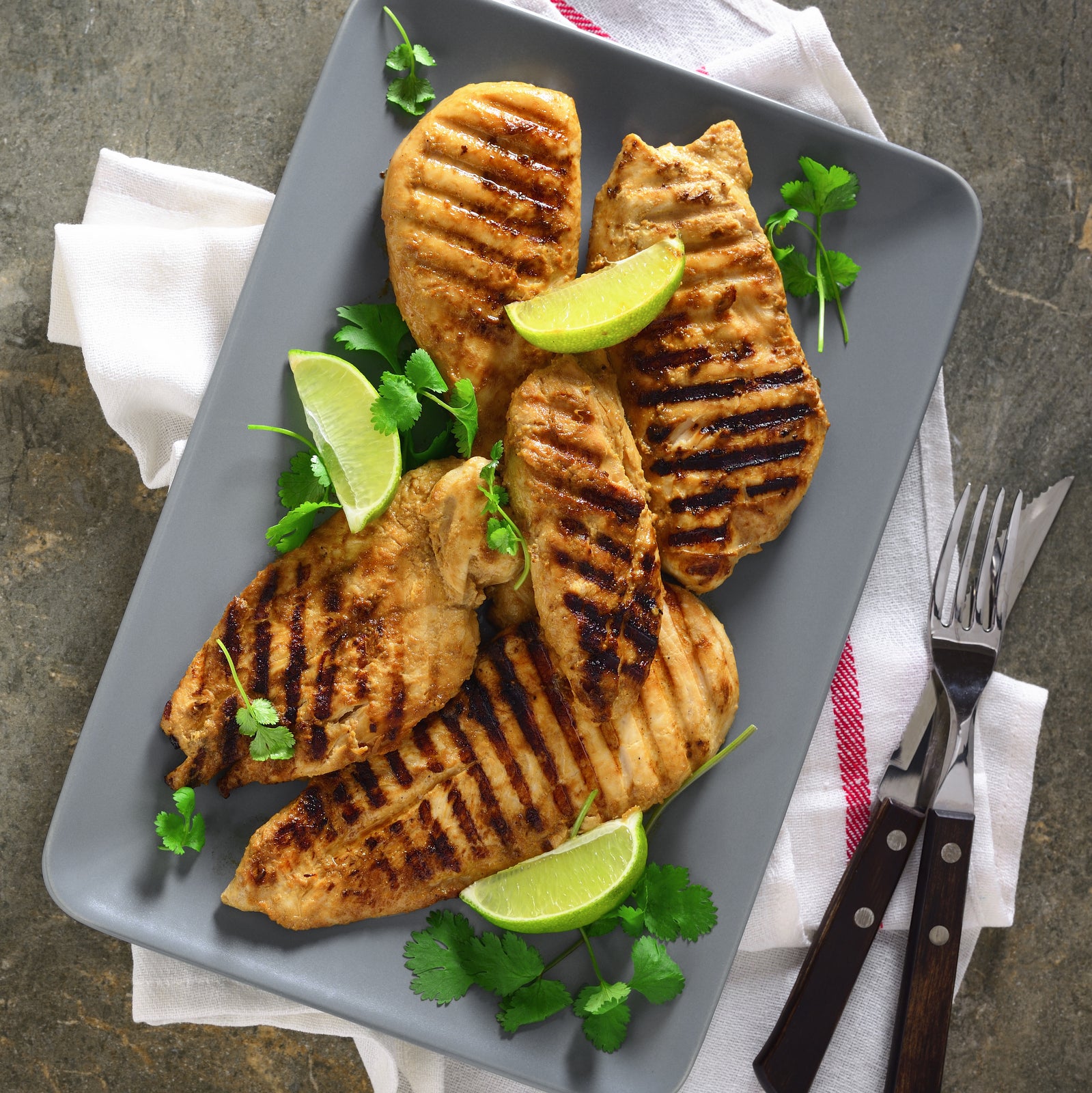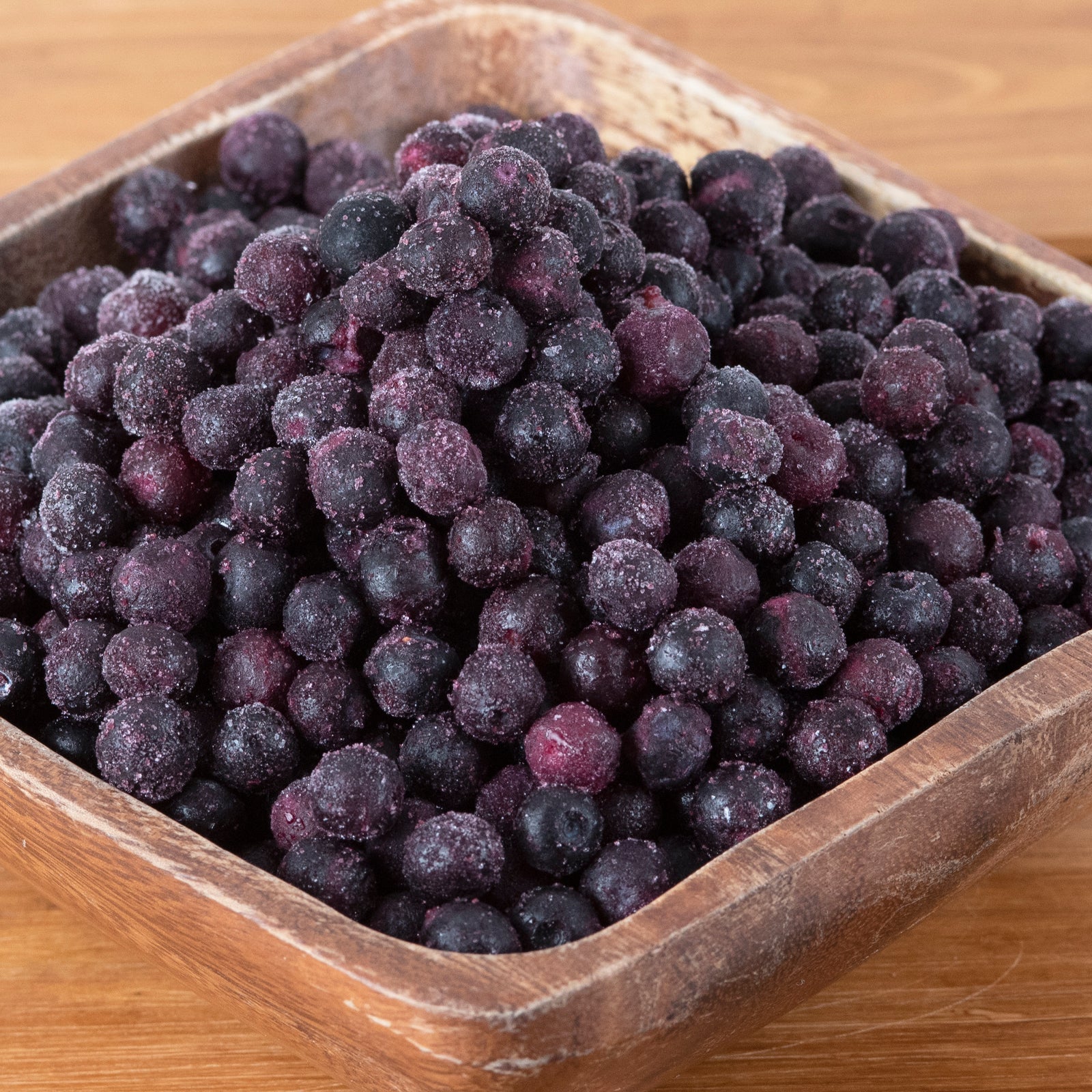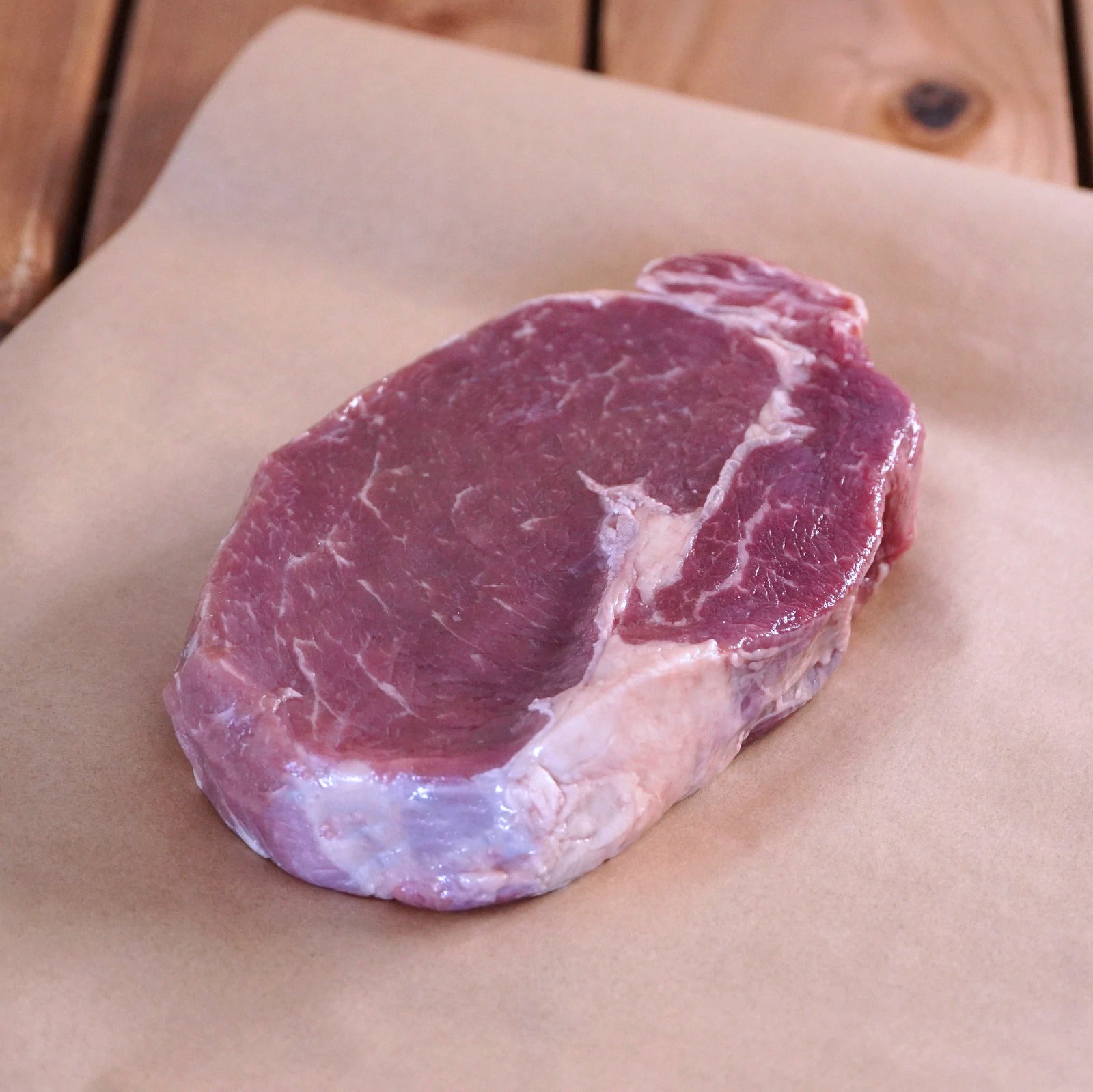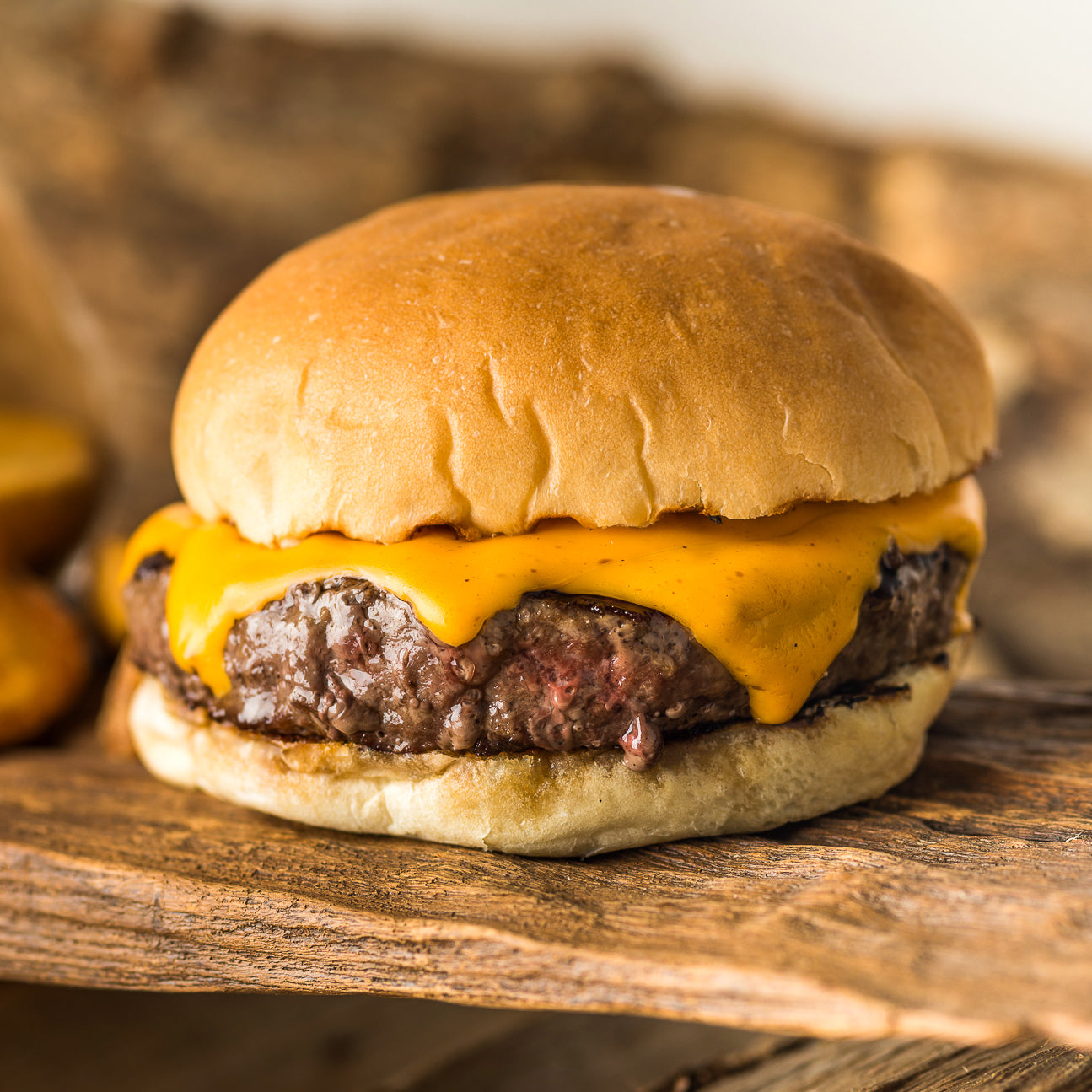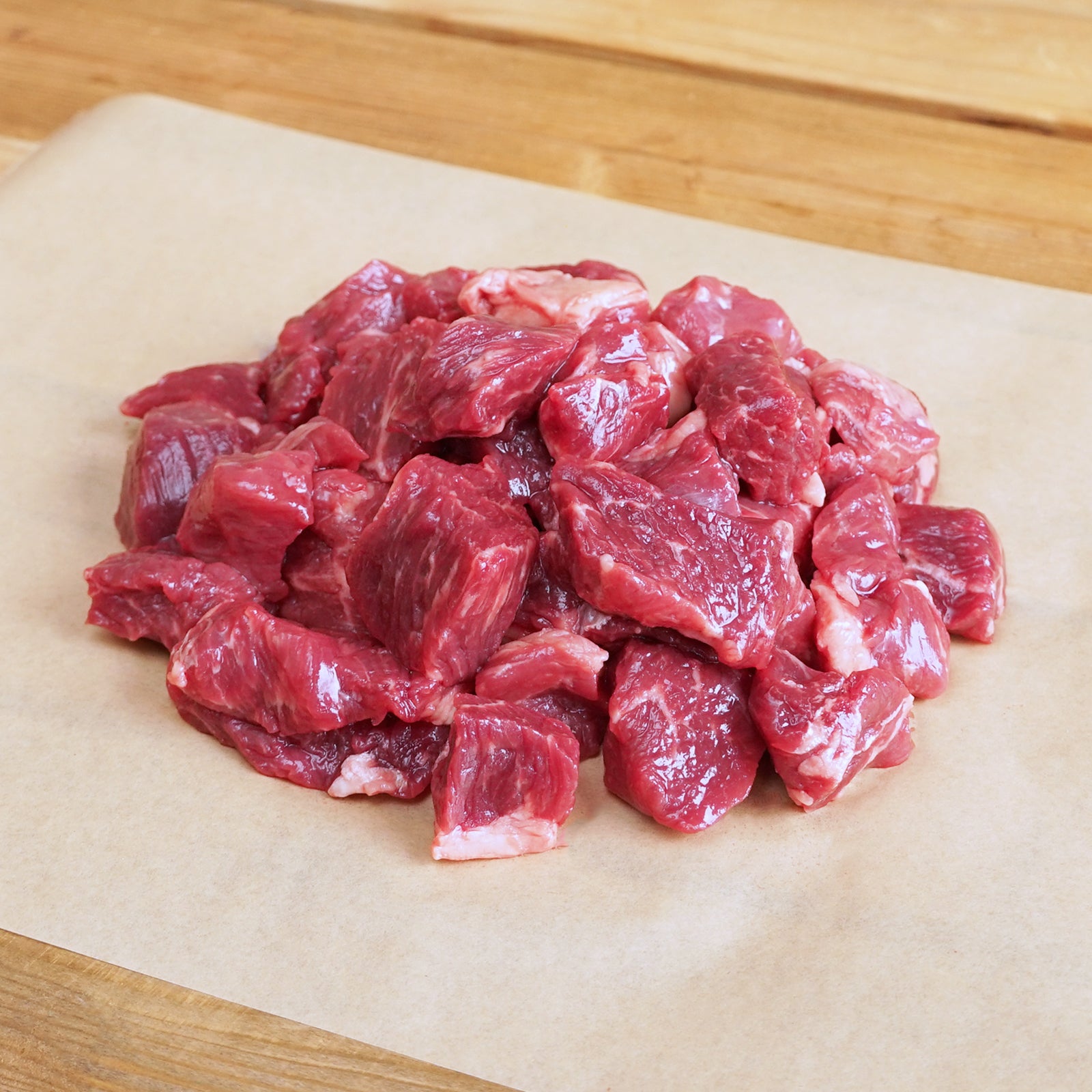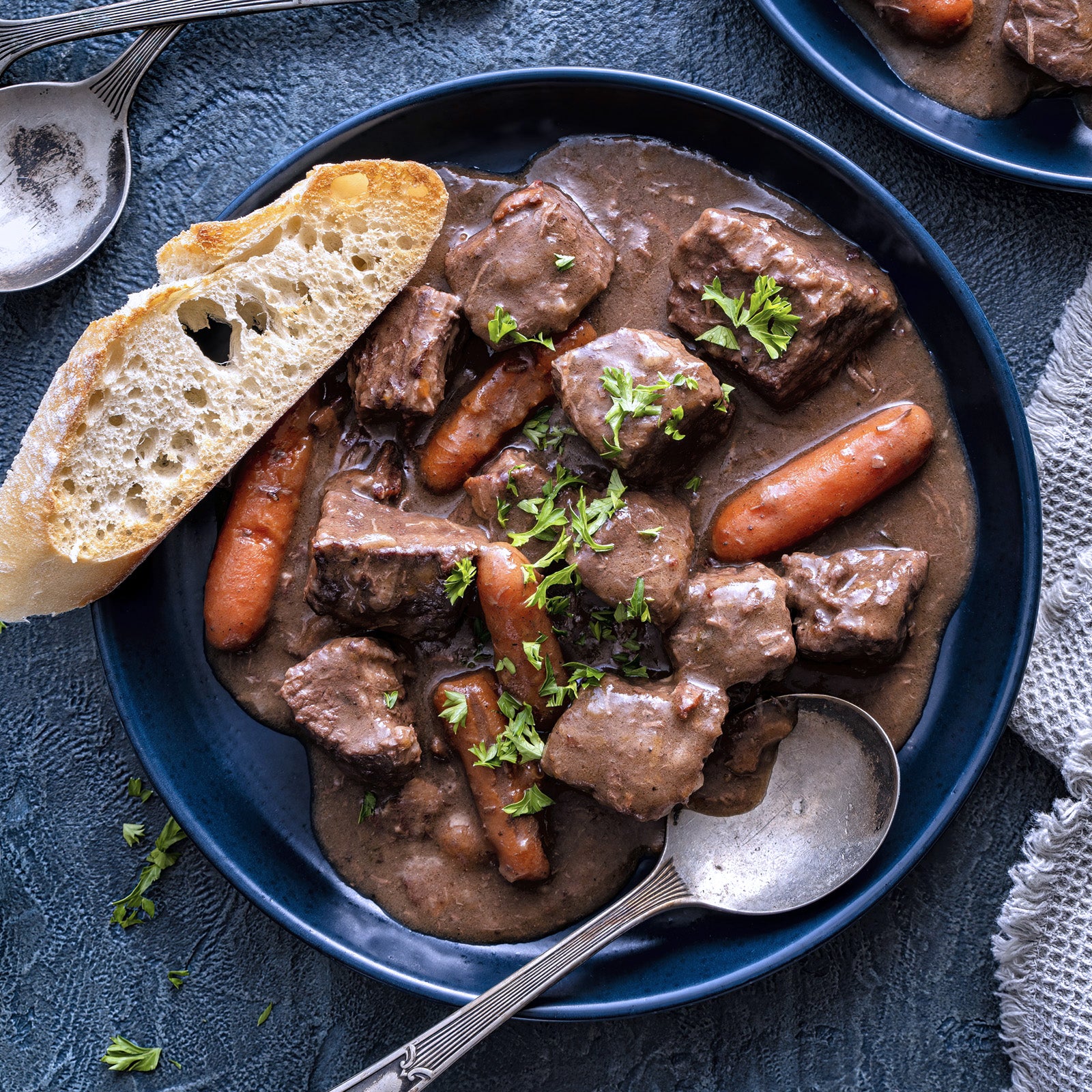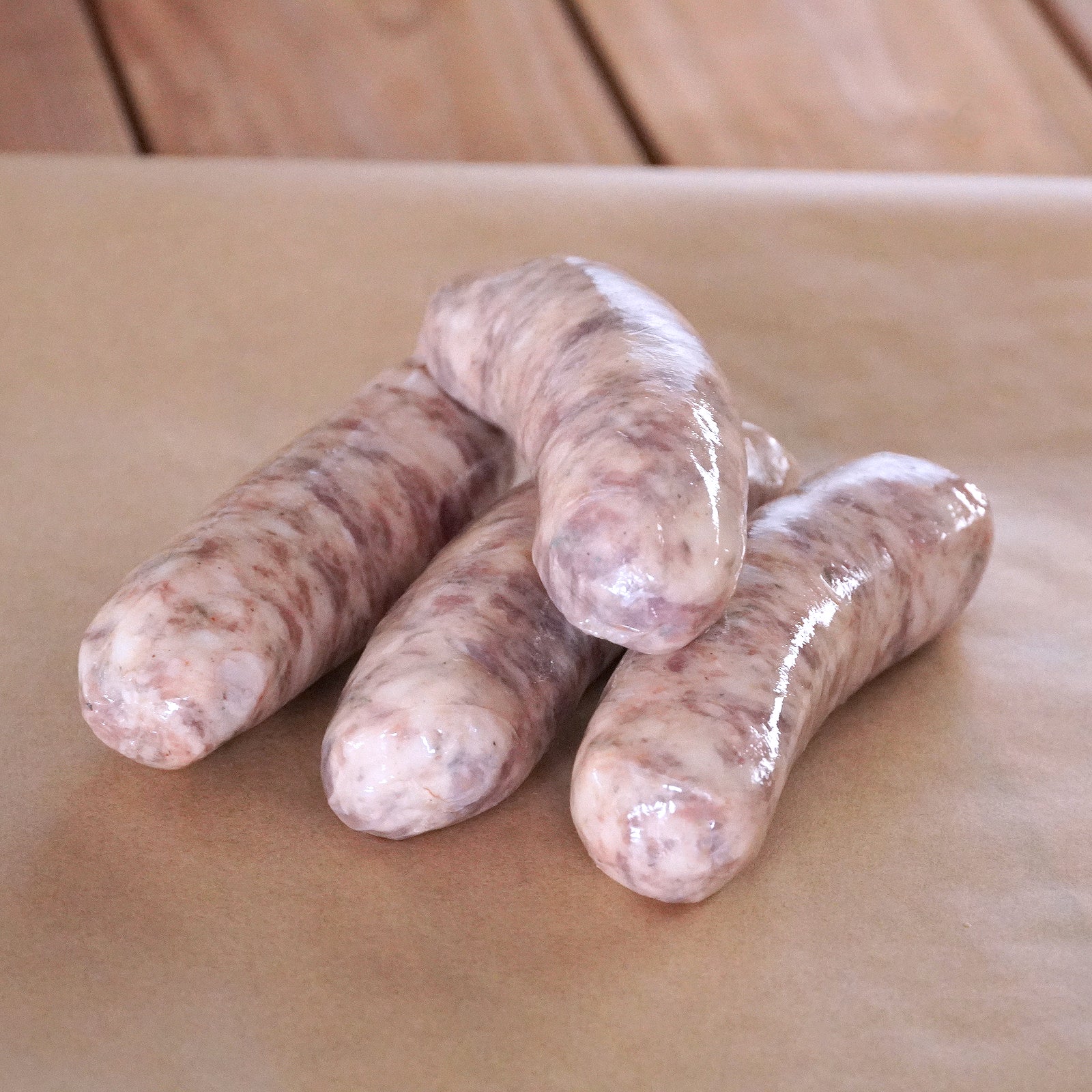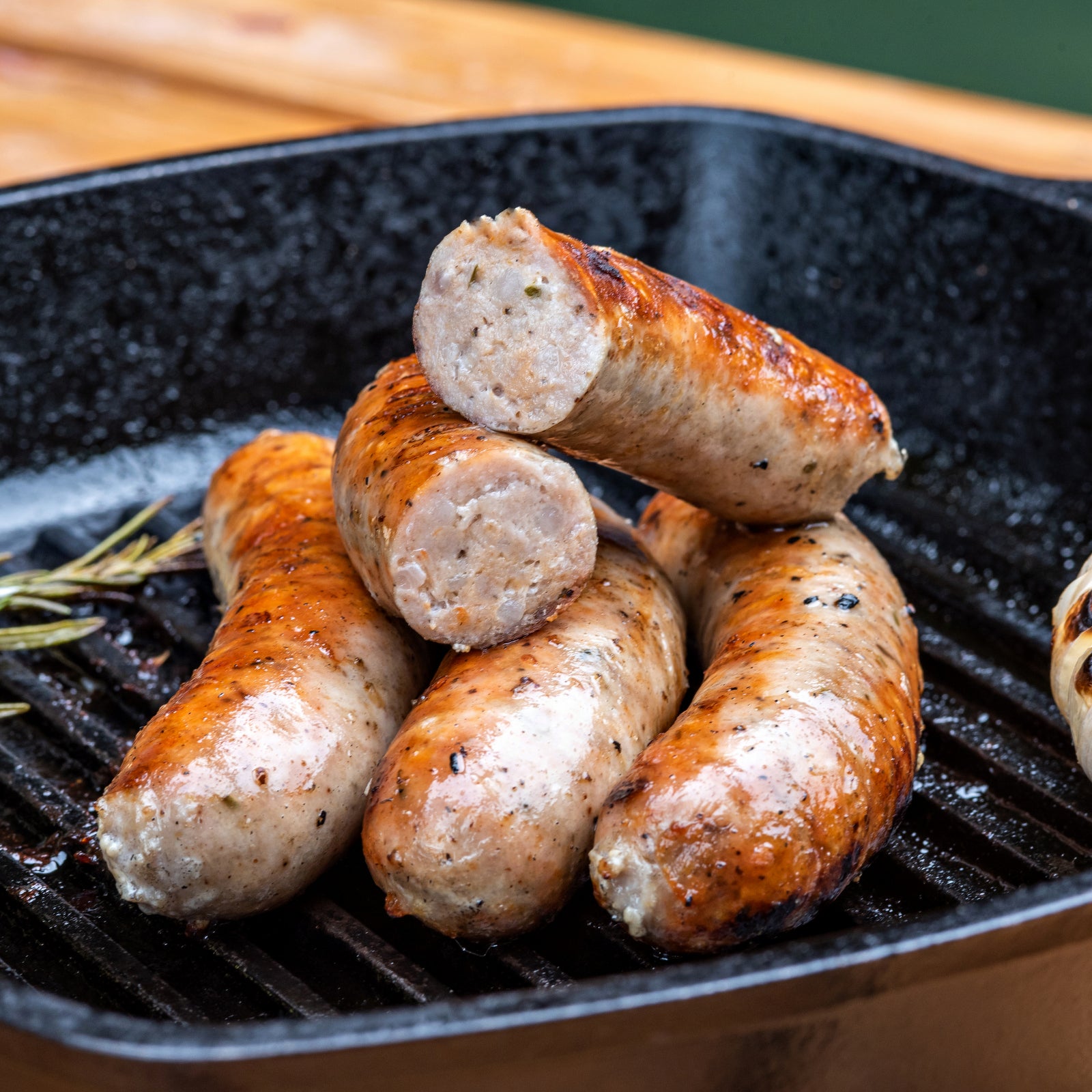What Is Grain-Fed Beef?
As you probably know, cows naturally grow up eating grass. The "grass-fed" method of raising cattle keeps the animals on a grass diet for their entire lives. But grass doesn’t provide the animals with many calories. That means it takes a long time for their bodies to fill out and even then, their meat is quite low in fat content.
To counter this, once the cows have grown on a diet of grass, grain-fed cows are then fed high-calorie grains like soybeans and corn as a fattening process. They are also typically kept in a small, enclosed space and are unable to move around freely or get exercise. So when you hear the term “grain-fed,” you can essentially think of it as a fattening technique.
Attributes of Grain-Fed Beef
Cattle that has grown up solely eating grass tends to have low-fat, lean meat. On the other hand, meat from grain-fed cattle is characterized by a moderate amount of fat that looks almost like a mesh within the meat. This so-called “marbling” is widely considered to be high-quality, and the finer the marbling there is, the higher the quality of the meat is as well.
Lean meat is a bit firm to bite into, but marbling creates a much more tender texture in the beef. Many people describe it as "melting in your mouth." That is the most outstanding characteristic of grain-fed beef, and it’s a very popular one for Japanese taste buds.
Differences in Meat Quality
The biggest difference in the meats is that grass-fed beef is leaner and therefore has a firmer texture. This firm texture is its main attribute. On the other hand, grain-fed beef has fat marbling that melts when cooked, creating a much more tender, juicy feeling in the mouth. Most people would agree that difference in texture makes a big difference in the quality of the meat itself.
As far as flavor goes, if you’re looking for a strong, classic beef flavor, then grass-fed would be the best choice. Grain-fed beef offers a milder beef flavor that is rounded out by the juicy fat.
The Fattening Environment
The environments that grass-fed and grain-fed cows are raised in is generally vastly different. The purpose of grain-fed cows is to get fattened up, so they are put into a small, enclosed feed lot where they eat their grain alongside many other cows. It’s difficult for them to move around, so their bodies convert all the high-calorie food they are fed into fat stores within a short time frame.
(At Horizon Farms, we make sure that our grain-fed beef, just like our grass-fed beef, is raised in a free-range environment where they can roam and relax without stress while still taking in the high-calorie grains necessary).
The goal of grass-fed beef on the other hand is not to fatten up the animals. Rather they are raised in a natural environment where they can wander around wide open spaces, get a proper amount of exercise, and eat the natural grasses and legumes like they have for countless generations. It’s important to point out that grain-fed cows are also raised in the same way for the first 85-90% of their lives. The fattening time spans only the last 10-15% before the beef is set aside for delivery. If you’d like to learn more about the differences, please read through our blog post on grass-fed beef.
Primary Regions for Grain-Fed Beef Production
The biggest producers of grain-fed beef include Japan, home of the famous wagyu beef, and the United States. Both countries primarily focus on raising grain-fed cattle. Australia and New Zealand, also important beef producers, have traditionally focused more on the production of grass-fed beef. However, production of grain-fed beef has been increasing recently.
The Situation in Japan
Although production in Japan remains fairly stable, it only amounts to about half of what is being imported. In other words, of the beef in Japan, about 1/3 is domestic, while the other 2/3 is imported from overseas.
For some years now, Australia has been the number one importer to Japan, with the United States taking the second spot. For a while, imports from America were stopped due to an outbreak of mad cow disease (BSE), but imports were continued in 2017 and have been growing slowly ever since. Australia provides Japan with a mix of both grass-fed beef and grain-fed beef, but the United States provides almost all grain-fed beef. In addition, New Zealand has recently started to climb in the number of imports to Japan both with grass-fed and grain-fed beef.
The Taste of Grain-Fed Beef
Compared to lean red meat, the perfect amount of fat in grain-fed meat gives it a nice tender texture. Generally, the more fat in the meat, the softer it will be. Having said that, the balance between fat and meat must be carefully considered. If there’s too much fat, the flavor of the meat will be overpowered. It might feel like rubber in your mouth and could also lead to indigestion.
One more thing to think about with grain-fed is that the greater fat content means higher calories. On the plus side, the high calories give a lot of energy, but for those who are watching their weight or are on a diet, it’s certainly something to take into account.
Japanese Taste
In Japan, a love for tender, marbled beef has become the norm. If people want steak, they choose sirloin. If they want sukiyaki, they go with marbled meat. If it’s barbecue, it’s got to be loin cuts. As mentioned earlier, most beef raised in Japan is high-fat, grain-fed beef, so it seems clear that for Japanese people, the preference is grain-fed. Because of that, the idea that Australian beef is tough is probably not a unique opinion.
In recent years, there’s been a lot of talk about the evolution of the Japanese palate, and a catalyst of that change has been grass-fed beef. Sukiyaki shops in particular have been causing quite a stir as they challenge the traditional tastes and introduce leaner meat. Whatever your taste, the balance between red meat and fat content can certainly be a deciding factor.
Conclusion – Grain-Fed Beef’s Allure
Raising cattle on a diet of grass and finishing with a diet of fattening grains, producers of grain-fed beef strive to introduce those beautiful white streaks of marbling throughout their meat. The rich, juicy flavor and tender texture has become the standard of high-quality beef and a favorite for the Japanese population.
In addition to satisfying our hunger, it’s always a good idea to seek out safe and clean foods. At Horizon Farms, we guarantee that our grain-fed beef is free of harmful antibiotics, free of growth hormones, and raised in an animal friendly, free-range environment. Enjoy some today and rest easy knowing that your meal is worry-free.
Disclaimer: Please note that while our explanations are correct, they are simplified for shortness and understanding. We encourage you to do further research on the topic.



